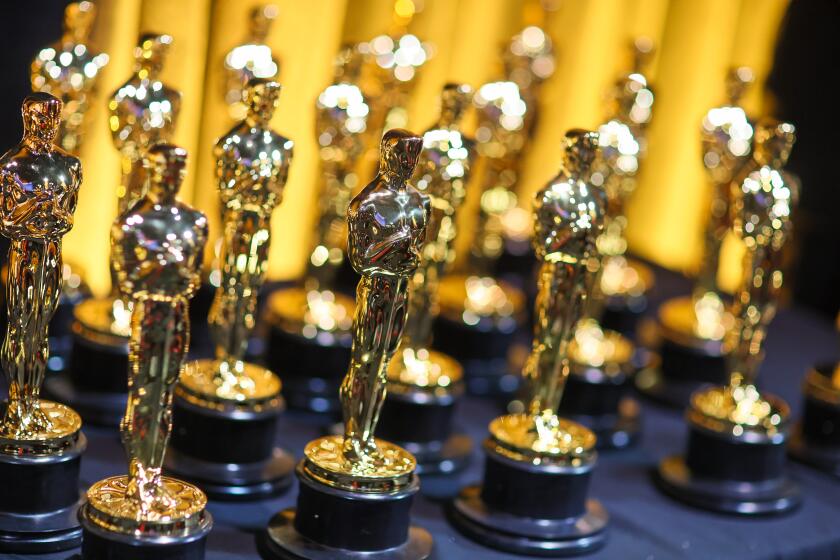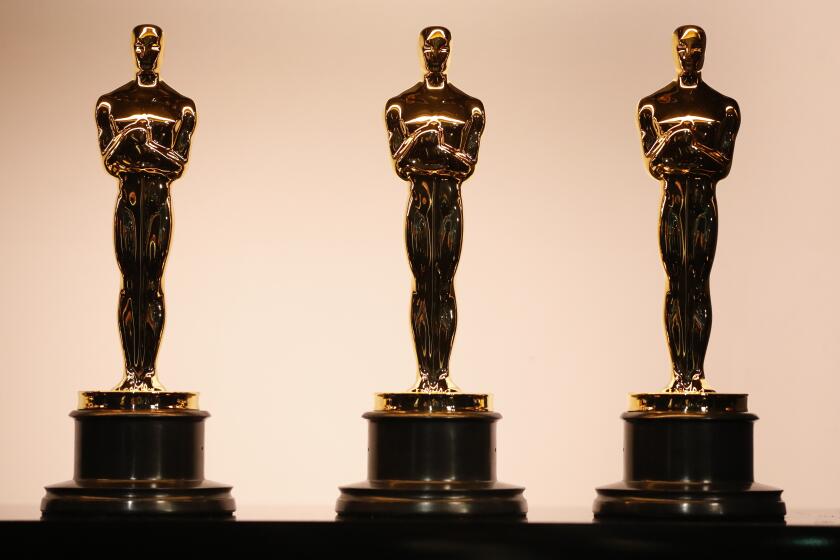Seeking Chinese Support for Arts
- Share via
In old-money Pasadena, the Pacific Asia Museum needs new money -- Chinese American money. So new thought has been given to the old horse in the lobby.
The horse is a chest-high clay sculpture that graced the tomb of a Han dynasty nobleman about 2,000 years ago. Agnes Gomes, the museum’s marketing director, worried that the steed might cause some prospective Chinese donors to bridle -- and close their checkbooks.
“There are people who say tombs shouldn’t be opened,” Gomes explained.
But Meher McArthur, a Pacific Asia curator, put Gomes at ease. McArthur said she was careful to do her homework on tomb exhibits and learned that they were well received by Chinese patrons, in this country and in China.
“I haven’t heard that they’ve disturbed anyone,” she said.
The Pacific Asia Museum and the Pasadena area’s many other cultural institutions -- a bounty that rivals those of major cities -- are becoming more attuned to Chinese sensitivities. With a tight economy pinching donations from dividend-dependent foundations, the museums, orchestras and theater companies are hungry for fresh sources of generosity. And the wealth flowing into the San Gabriel Valley, like its population, is increasingly Chinese in origin.
Gone are the days when the art showcases and performance groups could limit their appeals to railroad barons and dowagers with Mayflower pedigrees. Endowment hunters for venues such as the Huntington Library now find themselves cold-calling folks with roots in Hong Kong or Taipei.
It’s been slow going. Fund-raisers have barely cracked the door to Chinese philanthropy. Some say they just recently wised up to the bottom-line possibilities in the area’s shifting demographics.
Replica of Palace
The Pacific Asia Museum seems a natural draw for Chinese benefactors. It occupies a scaled-down 1924 replica of a Manchu palace -- the only one of its kind in America -- and its Pan-Asian collection has won acclaim.
But fewer than 20% of the museum’s 1,200 members are of Chinese heritage, Gomes said. The Pacific Asia is trying to recruit more Chinese Americans for its board -- three of the panel’s 30 trustees are Chinese -- and has stepped up efforts to coax contributions from well-to-do immigrants.
“We just haven’t had the participation of the Chinese community,” Gomes said as she walked through the museum’s arched breezeway into a courtyard lush with bamboo and primrose. The Pacific Asia’s upturned roof looks across Los Robles Avenue to a California Pizza Kitchen and the giant pit of an office tower under construction.
Grace Nicholson, who traded in Far East art and artifacts, built the mini-palace as a combination gallery and home. She deeded it to the city of Pasadena in the 1940s and it later housed the Pasadena Art Museum. It became the Pacific Asia Museum in 1971.
Before movie-industry green brought manors to Beverly Hills, the deep-lawn sections of Pasadena were the roost of numerous affluent Angelenos. Many were industry captains from the Midwest and East who retired here. They had a taste for the refined and their fortunes seeded a world-class playground of culture.
The Huntington Library, Art Collections and Botanical Gardens opened in 1928, the year after the death of its founder, railroad and real estate magnate Henry E. Huntington. That was roughly when the Pasadena Symphony debuted and the Pasadena Playhouse moved into its Spanish-style theater.
Later came the Pasadena Museum of History, Norton Simon Museum, Pasadena Pops Orchestra, California Philharmonic and, last summer, the Pasadena Museum of California Art. The list goes on.
All but the Norton Simon, which was lavishly endowed by the late industrialist whose name it bears, are prowling for loose wallets. And all have relatively few Chinese members and donors, despite the huge influx charted in the 2000 census.
The San Gabriel Valley’s Asian American population jumped by 54% in the 1990s. About a quarter of the region’s 1.7 million people are Asian, mostly ethnic Chinese, whose numbers have grown the fastest. Half a dozen cities in the valley -- including flush San Marino, the Huntington’s address -- have Asian majorities or pluralities. Pasadena, with its population of 134,000, is 10% Asian, up from 8% in 1990.
Investment Capital
A steady infusion of investment capital from Taiwan and China has mirrored the census trend. So has the rapid expansion of San Gabriel Valley business and real estate holdings controlled by Chinese Americans. There is no precise estimate of what that totals, but economists and banking officials put the sum in the tens of billions of dollars.
Which is enough to cue the muse of Gillian Bagwell, artistic director of the Pasadena Shakespeare Company. “I would love to access the Chinese community, but I’m not sure I would know how,” she said.
Underwriting “Macbeth” is not a high priority for Chinese philanthropists, although it could be, said Jessica Chao, who has studied Chinese giving as project director for the New York-based Coalition for New Philanthropy.
Chinese benevolence follows patterns seen in many immigrant groups, Chao said. Newcomers send money first to their native countries to help relatives, and then donate to mutual-aid societies on these shores.
As the immigrants settle in, their giving becomes more mainstream. That is true in the San Gabriel Valley, where Chinese-owned corporations and their executives are known to contribute liberally to United Way and other large charities.
But none of the Pasadena-area cultural enterprises has landed the Chinese sponsor who could finance a big-ticket exhibition or extend a concert season. Chao said such largess could come if institutions did more to engage Chinese Americans individually.
“Anyone who knows philanthropy knows that the best way to get people to give is to get them involved,” Chao said. “You have to invite them in as advisors.”
Among those yet to be invited is Li-Pei Wu, chairman of General Bank. “The Pasadena organizations haven’t approached me,” Wu said with a laugh.
The Taiwanese-born Wu, a Glendale resident, is celebrated in Chinese American circles as a soft touch, having committed millions to a range of causes. His bank’s assets have swelled from $6 million in 1980 to $2.6 billion today. “We are eager to commingle,” he said. “We are eager to be invited.”
Also eager are Andrew and Peggy Cherng, owners of the South Pasadena-based chain of Panda restaurants. Though the couple occasionally take in the Pasadena Symphony or visit the Huntington, their philanthropy goes mostly to the United Way, hospitals and schools.
“We haven’t really been tapped by the cultural institutions,” said Peggy Cherng, who was born in Myanmar (formerly Burma) and reared in Hong Kong. “We have to know what their mission is about.”
The Cherngs started with a single Pasadena restaurant in 1973. They now preside over a chain of 500 eateries that generate annual revenue of more than $300 million.
Andrew Cherng, who was born in China, said building the business has left scant time for enjoying the arts, so he hasn’t thought much about giving to them, an experience he suggested is common among first-generation Chinese entrepreneurs. “One of these days, I want to do more,” he said.
In June, he finished a stint as co-chair of a United Way campaign that raised $66 million. “But it’s a little harder [to give to the arts] because the other needs are more urgent,” he said.
The Cherngs have heard from the Huntington, which sought a donation for its Chinese garden project. They are weighing the request.
“This is really about relationship-building,” said George Abdo, a Huntington vice president. “We are trying to make those connections with the Chinese community.”
Abdo was strolling through the garden site, lifting an umbrella against the rain. Grading had begun for the first phase of the 12-acre garden. Earthmovers rested in a muddy lake bed.
A $10-million bequest from businessman Peter Paanakker, who died in 1999, got the garden underway. It is envisioned as one of the largest classical Chinese gardens outside China, bright with lotus flowers, but the Huntington needs millions more to complete it.
School Programs
Not far away, the Pasadena Symphony hopes to drum up Chinese interest by hosting programs in Chinese-dominated schools. The Pasadena Pops has appealed to Chinese-owned companies for support, so far without success. The California Philharmonic and Pasadena Museum of History have yet to zero in on Chinese prospects.
“We really need to reach out to them,” said Andre Vener, philharmonic president. “The percentage of them donating to us versus the percentage of them living in the area doesn’t match up.”
That’s also the case at the Museum of History, ensconced in the Feynes Beaux Arts Mansion on Orange Grove Boulevard. Docent Pam Yerkes, a Chinese American, directed a tour, her footsteps echoing on the original 1906 wood floors.
Walking past Finnish and Italian chandeliers, a 15th century Spanish chest, and paintings by Southern California impressionists, she found a single Chinese piece: a dragon-tapestry fireplace screen.
“I don’t know that there is much Chinese history here in Pasadena,” Yerkes said. “Back then, there were restrictions on where the Chinese could live.”
She said it is hard to involve newer generations of Chinese in the museum. “How do you get folks interested in something they have no ties to?” she said.
Rosa Zee knows how Yerkes feels, but she is optimistic. Zee is outreach coordinator for the Pacific Asia Museum, and her task is to enlist more Chinese immigrants as members and donors.
“Some of us didn’t know we could come to this museum and share our culture,” said Zee, a Chinese native. “We have great potential to reach those people.”
As for the ghostly horse in the lobby, Zee said, it didn’t bother her a bit.
More to Read
The biggest entertainment stories
Get our big stories about Hollywood, film, television, music, arts, culture and more right in your inbox as soon as they publish.
You may occasionally receive promotional content from the Los Angeles Times.











